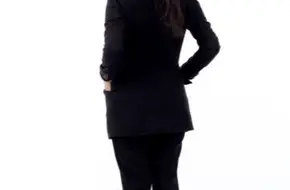-
Shanghai’s climate divides the year into distinct seasons. Spring (March–May) and autumn (September–November) offer mild temperatures (15–25°C) and vibrant scenery, making them ideal for outdoor exploration. Summer (June–August) is hot and humid (avg. 30°C+), while winter (December–February) brings cooler weather (5–10°C) with occasional rain. Pack layers for unpredictable spring/autumn drizzle, sunscreen for summer, and warm clothes for winter. Avoid early October if visiting the World Expo Park, as it hosts crowded festivals.
Which iconic landmarks should anchor my Shanghai itinerary?
Start with The Bund: stroll along this waterfront promenade to admire colonial-era buildings and modern skyscrapers. At night, the illuminated skyline reflects on the Huangpu River. Cross the river to Lujiazui for close-ups of the Oriental Pearl Tower and Shanghai Center. For cultural depth, visit Yu Garden (a 400-year-old classical Chinese garden) and the Shanghai Museum (home to ancient bronzeware and calligraphy). Allocate at least half a day for The Shanghai Disney Resort, located in Pudong—book tickets ahead to skip lines.
How can I experience local life beyond tourist hotspots?
Wander Tianzifang: this artsy labyrinth near the former French Concession teems with boutiques, cafes, and street performers. For a morning immersion, join retirees practicing tai chi in Fuxing Park or shop for fresh dumplings at Wujiang Market. Take the metro to Xujiahui, a historic district blending Catholic cathedrals with trendy malls. To ride like a local, use the Shanghai Metro (13 lines, English signs available)—buy a Shanghai Public Transport Card (¥20 deposit) for hassle-free travel.
What hidden gems satisfy foodies and history buffs?
Skip touristy restaurants for Huanghe Road Food Street, where vendors serve affordable snacks like shengjian (pan-fried dumplings) and hongshao rou (red-braised pork). For upscale dim sum, book a window table at Greenland Galleria’s Xin Wang restaurant. History enthusiasts should visit M50 Creative Park (converted industrial chic) and Shanghai Promotion Gallery (1930s art deco building). Craving adventure? Take the Maglev Train from Pudong Airport to downtown—it hits 430 km/h in seconds.
Are day trips worth adding to my Shanghai trip?
Absolutely. Allocate a day for Suzhou (1 hour by high-speed train): explore classical gardens like Humble Administrator’s Garden and canal-side alleyways. For rural charm, head to Zhujiajiao Water Town (1 hour via metro/bus)—cruise its canals in a wooden boat. Thrill-seekers can hike Sheshan Hill (Shanghai’s tallest point) or cycle along the Songjiang Promenade. Use China’s 12306 app for train tickets; booking hotels near Hongqiao Hub saves time if multi-city traveling.
Shanghai’s blend of futuristic skylines and historic alleys rewards savvy planners. Start with iconic sights, dive into neighborhoods, and leave room for spontaneous detours—after all, part of the magic is discovering the city’s unexpected layers. Need help crafting a tailored itinerary? Deep China Travel specializes in curating experiences that balance must-see highlights and off-the-beaten-path gems.
-
When is the Best Time to Visit Shanghai? Shanghai, China’s vibrant metropolis, shines brightest during spring (March to May) and autumn (September to November). These seasons offer mild weather, fewer crowds, and lush scenery. Spring brings cherry blossoms along the Huangpu River and vibrant tulip gardens in Century Park, while autumn paints the city in golden hues with crisp, comfortable air. Avoid summer (June to August) if you’re sensitive to humidity—temperatures often hit 35°C (95°F) with stifling heat, and winter (December to February) can be chilly, though less crowded.
What’s the Weather Like in Different Seasons?
Shanghai’s climate is humid subtropical, meaning extremes. Here’s a quick guide:
Season Average Temp (°C/°F) Rainfall Highlights Spring 15-25°C (59-77°F) Moderate Cherry blossoms, festivals Summer 28-35°C (82-95°F) High Hot nights, waterfront fun Autumn 18-28°C (64-82°F) Low Clear skies, cultural events Winter 5-10°C (41-50°F) Minimal Fewer crowds, holiday lights How Can I Avoid Crowds in Shanghai?
While spring and autumn are peak seasons, you can still dodge the rush. Visit mid-week instead of weekends, and avoid national holidays like Chinese New Year (January/February) and Golden Week (October). For cherry blossoms, aim for early April before tour groups arrive. Autumn festivals like the Shanghai Wine Festival (mid-September) are lively but manageable if you go early.
Are There Unique Experiences for Each Season?
Absolutely! Summer isn’t all sweat—explore night markets, rooftop bars, and the Shanghai Circuit (former F1 racetrack). Winter transforms the city into a twinkling wonderland with festive markets and ice-skating at The Bund. Year-round, landmarks like The Bund, Yu Garden, and the Shanghai Tower remain must-sees, but consider seasonal add-ons: autumn’s Sheshan Maple Festival or spring’s F1 racing vibes.
Any Practical Tips for Visiting Shanghai?
Pack layers for unpredictable weather, comfy shoes for walking, and a lightweight raincoat. Use the metro for efficiency, but avoid rush hour (8-10 AM, 5-7 PM). For foodies, time your visit to coincide with local feasts: hairy crab in autumn, soup dumplings anytime, and street snacks at night. Finally, book attractions like Disneyland or the Shanghai Museum in advance—popular spots get busy fast!
Whether you’re here for skyline views or cultural dives, timing your trip right makes Shanghai’s energy even more electric. Let Deep China Travel craft your itinerary for a seamless adventure!

